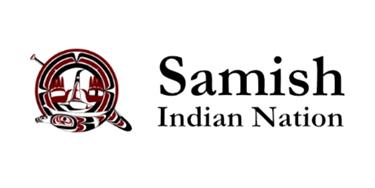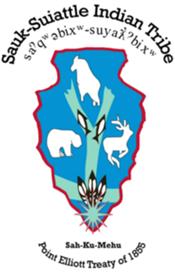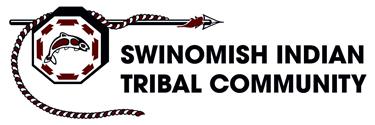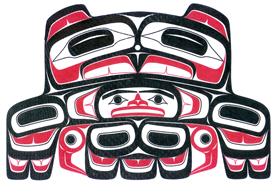The lands conserved and protected by Skagit Land Trust have been inhabited and stewarded by numerous tribes and Indigenous peoples since time immemorial. We recognize and respect the inherent, indigenous, and treaty rights of the Coast Salish People, who have a deep and abiding connection to this place. Tribes within Skagit County include Samish Indian Nation, Sauk-Suiattle Indian Tribe, Swinomish Indian Tribal Community, and Upper Skagit Indian Tribe. In addition Lummi Nation, Nooksack Tribe, Stillaguamish Tribe of Indians, and The Tulalip Tribes have ancestral and continued connections to these lands. We pay respect to the elders, tribal leaders, and members of each sovereign nation who continue to honor these lands through traditions that have been passed down through the generations. We acknowledge our responsibilities to care for these conserved and protected lands, both through sustainable stewardship practices and the core values that guide our work. We remain open to listening and learning from each tribe as we develop authentic relationships through our common regard for the land, water, air, and other living things.
Resource links for Skagit County Tribal Nations
Skagit Land Trust values past and present collaboration with tribal nations. The information below is from the individual websites for each of the four sovereign nations located in Skagit County. Please click through to learn more directly from them.

Samish Indian Nation
From their website - "The Samish Indian Nation is the successor to the large and powerful Samish Tribe, a signatory to the Treaty of Point Elliott in 1855. The Tribe's traditional territory stretches over a wide region of the Salish Sea in Northwest Washington, from the tops of the Cascades Mountains to the far western shores of the San Juan Islands. The beauty, abundance and variety of the region since time immemorial provides a rich backdrop for our history and cultural traditions that remain strong today."
"Who We Are"
From the Samish Department of Natural Resources - "We are involved in environmental monitoring, protection and restoration in marine, freshwater and terrestrial environments. Our projects include a wide range of activities from stormwater monitoring, plant and animal population studies and climate change analysis to full scale beach and river restoration projects and marine debris removal. We use traditional ecological knowledge and insights from Tribal members to influence our work to ensure availability of traditional use materials and native foods for current and future generations."
Map of DNR Projects
Overview of Story Maps
Story Maps of History and Culture of Samish Indian Nation

Sauk-Suiattle Indian Tribe
From their website - "The Sauk-Suiattle Indian people have lived under the gaze of Whitehorse Mountain for many generations: as Fishermen, Gatherers and Hunters in the region of Sauk Prairie and near the present-day towns Darrington, Marblemount and Rockport, WA. In the early days, we were known as the Sah-ku-me-hu. Sah-ku-méhu homelands were the entire drainage area of the Sauk, Suiattle and Cascade Rivers. We had an important village at Sauk Prairie, near the confluence of the Sauk and Suiattle Rivers. The village consisted of eight traditional cedar longhouses which were destroyed in 1880s by early non-Indian settlers who had laid claim to these lands under the U.S. Homestead Act and Dawes Act."
Department of Natural Resources
Sauk-Suiattle Museum

Swinomish Indian Tribal Community
From their website - "The Swinomish Reservation is located on Fidalgo Island in Western Washington State. It is the home of the Swinomish Indian Tribal Community, a federally recognized tribe. The Swinomish Tribe is descended from and is a successor to tribes, including Swinomish, Kikiallus, Samish and Lower Skagit, that inhabited the Skagit Valley and Puget Sound islands for thousands of years before non-Indian settlement."
"Who We Are"
People of the Salmon Publication
qyuuqs News - Monthly Newsletter
From Swinomish Climate Change Initiative & Department of Environmental Protection -
"To address projected impacts identified in the Swinomish 2009 Climate Impact Assessment Technical Report, such as inundation of shoreline areas and resources, wildfire risk, and health impacts from higher temperatures, the adaptation project team assembled a comprehensive adaptation strategy toolbox. Types of options in the toolbox included non-regulatory tools such as buffers and incentives, regulatory controls such as shoreline restrictions and setbacks, options to allow shoreward migration of beaches and habitat, practical engineering techniques such as bank protection or raising/hardening structures where desired or appropriate, and improved risk prevention planning. To establish a rational process for evaluating strategy options, the team worked with project advisors to develop a set of evaluation objectives against which to do initial screening of options, and using those objectives the team developed a set of action recommendations.
Swinomish climate adaptation actions taken since 2010 address the following:
- Shoreline management
- Inundation of tidelands, shellfish beds
- Loss of forage, spawning habitat
- Wetlands/estuarine habitat impacts
- Changes in Wildlife Forage Resources
- Drinking water conservation, storage
- Emergency preparedness, response
- Climate science
- Culvert failure, fish passage"
Between Two Worlds - "Between Two Worlds Indigenous Science Program was developed to fulfill a need for our tribal youth. We provide the tools and resources for students to be able to connect modern science and traditional cultural values to become stewards of our homeland."

Upper Skagit Indian Tribe
From their website - "The Upper Skagit Indian Tribe is a federally recognized Indian tribe composed of eleven predecessor bands, including the Nuwha’ha, Nookachamps, Bsigwigwilts, Bsxwexwehwa’1, Chobahahbish, Sabelxu, Saylayotsid, Shayayotsid, Kwabatsabsh, Sahkumehu, and Skaywih. An original signatory of the Treaty of Point Elliott, the Upper Skagit people are descended from a tribe with eleven separate villages on the Upper Skagit and Sauk Rivers in Washington State. Our ancestors eventually consolidated, but a separate reservation was not originally established, and some tribal members had to reside on other reservations, primarily Swinomish. It was not until September 10, 1981, that the Upper Skagit Reservation was established."
"Who We Are"
Department of Natural Resources - "The Natural Resources Department’s (NRD) mission is to manage, protect and enhance natural resources to support the Tribe’s fishing, hunting and gathering rights. The NRD is responsible for providing technical and policy support for managing and conservation all fish, shellfish and wildlife resources for now and into perpetuity. Therefore, NRD staff participates in salmon and shellfish negotiations, fisheries implementation, harvest monitoring, and water management."